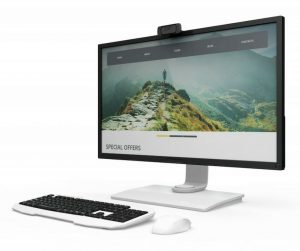Differences between cold booting and warm booting: The process by which an operating system that is currently executing is reloaded, ultimately restarting the computer system, is known as booting. The processes involved in starting up a computer are better described by the terms rebooting, booting, start-up, and boot up. The system basically does a POST, or power-on self-test, and loads all the required drivers before becoming operational.

Before the operating system launches, a series of tasks known as booting are carried out by the system. Reboots can be either warm (soft booting) or cold (hard booting), depending on whether the system needs to be launched from a powered-off or powered-on state.
Recommended: Differences Between the first and second generation computer
Boot Sequence
Every personal computer performs a common set of tasks during the boot process. When you hit the power button, the machine starts a series of events that eventually start the boot procedure. The starting point is the CPU, which executes a memory command for the BIOS to choose the beginning program. The power-on self test (POST) is then carried out by the program to ensure that each component of the system is operating correctly. If everything is in order, the BIOS will carry out the configured boot process until it locates the appropriate device with the OS on it. The CMOS chip is typically used by the BIOS to locate the operating system.

The master boot record (MBR), which examines the boot sector of the drives for the correct disk with the boot loader, loads the contents into memory and then transfers control of the boot process to the operating system after the BIOS successfully identifies the appropriate bootable device. The boot process is now finally finished, and users can access the system.
The two main methods of restarting the computer are cold (hard) booting and warm (soft) booting. While both approaches result in the same result, their definitions differ slightly in terms of how the boot process works.
Also see: Positive and Negative impact of social media on students
What Is Cold Booting?
At this point, we have a general understanding of the booting procedure. What exactly is the cold booting now? When we switch a computer from the OFF state to ON, this is the first thing it does.

The microprocessor is initialized in the first phase. The following steps are used to perform a cold booting process:
Steps for Cold Booting
a. When a computer is turned on, it automatically loads the predetermined memory address into the IR (Instruction Register), making the instructions ready to be executed. At the memory location is the basic bootstrap program, which is typically kept in the ROM.
Also see: Advantages and Disadvantages of Being a Lawyer
b. The Power On Self Test is a diagnostic test that is carried out by the bootstrap program to determine the state of the various computer system components (POST). The system bus, video display card, internal clock, RAM, disk drivers, and keyboard are all tested as part of this process. If the test is successful, the speaker will emit a brief beep.
c. After passing the POST test, it loads a block of code into main memory from the boot sector, which is a small portion of the hard drive. The location of the final section of the bootstrap software, which is loaded next, is kept in this block of code.
d. When the full bootstrap program is loaded, the operating system kernel and device drivers are then loaded into memory, allowing the computer to function as intended.
Also see: Highest Paying Programming Jobs Currently
What is Warm Booting?
Warm Booting differs from Cold Booting in that it is not performed when the device first turns on (computer). The POST test is omitted as well. If for any reason while you’re working, your computer hangs and you have to restart it to continue functioning. Rebooting or resetting the computer is referred to as warm booting.

You can do this by pressing the reset button or the designated keys (Ctrl+Alt+Del) all at once. RAM is not examined in this booting method because there is no Power On Self Test.
Also see: Qualities of a good software engineer
Difference Between Cold Booting And Warm Booting
The purposes and outcomes of various boot techniques vary. Warm booting allows all processes to end, completes application upgrades and installations, and fixes freezes and issues. Due to the lack of the computer’s self-test mechanism, this process is quicker than a cold boot. Warm booting prevents components from having enough time to completely reset, cool down, or stop, and memory may not be cleared.
A cold boot enables the motherboard’s power to entirely discharge, resetting every component and wiping the memory. When the hard drive starts up cold, other components may chill and then warm as well. The major distinction between warm booting and cold booting is that warm booting involves restarting a computer without cutting off its power, whereas cold booting involves turning on a computer machine that has been switched off.

Also see: Most profitable skills to learn in the world currently
Here’s The Summary of the Differences Between Cold Boot and Warm Booting
1. Definition: The process of rebooting a computer from a shutdown or powerless state and restoring it to its usual operating state is known as cold booting. Warm booting, on the other hand, is the process of restarting an active computer without shutting it off entirely. This clarifies the primary distinction between cold and warm booting.
2. Initialized By: We must press the power button in order to start the cold booting process. In contrast, warm booting is done by pushing the reset button while simultaneously pressing the Ctrl, Alt, and Del keys twice.
Also see: Most difficult examinations in the world 2022
3. Consequences: Warm booting can be fatal, whereas cold booting is safe. The effects of warm booting can be detrimental to the system and the data, particularly if those data have not been preserved.
4. Functions: Warm booting allows all processes to end, completes application upgrades and installations, and fixes freezes and issues. Due to the lack of the computer’s self-test mechanism, this process is quicker than a cold boot. Warm booting prevents components from having enough time to completely reset, cool down, or stop, and memory may not be cleared.
A cold boot enables the motherboard’s power to entirely discharge, resetting every component and wiping the memory. When the hard drive starts up cold, other components may chill and then warm as well.
Recommended: Most Complex Movies of All Time
5. Post (Power On Self Test ): During the Cold Boot, the Power On Self Test (POST) is used to assess the RAM and the condition of the computer’s core components before loading the operating system. This is an important difference between them. The initial self-test is skipped with Warm Boot, however, and the operating system is loaded right away.
6. Alternate Names: Cold booting is often referred to as hard booting, cold start, and dead start. While Soft Booting is another name for warm booting.
7. Frequency: Cold booting is something we do pretty frequently, while warm booting is something we do much less of.
Also see: Easiest programming languages to learn
Conclusion
The boot procedure you select will actually rely on the issue or error the system is experiencing, which might be anything from a program that has frozen to an app that isn’t responding to commands to a system reboot that is required following a firmware update. If a software or application is unresponsive, a warm boot is preferable since a straightforward reset command can restore the system to its initial condition without cutting power.
On the other hand, a cold boot is particularly effective against system crashes that would otherwise necessitate performing a thorough system diagnosis by forcing a reboot. One drawback of performing a cold boot is that it totally resets the hardware, erasing all memory.

Edeh Samuel Chukwuemeka, ACMC, is a lawyer and a certified mediator/conciliator in Nigeria. He is also a developer with knowledge in various programming languages. Samuel is determined to leverage his skills in technology, SEO, and legal practice to revolutionize the legal profession worldwide by creating web and mobile applications that simplify legal research. Sam is also passionate about educating and providing valuable information to people.